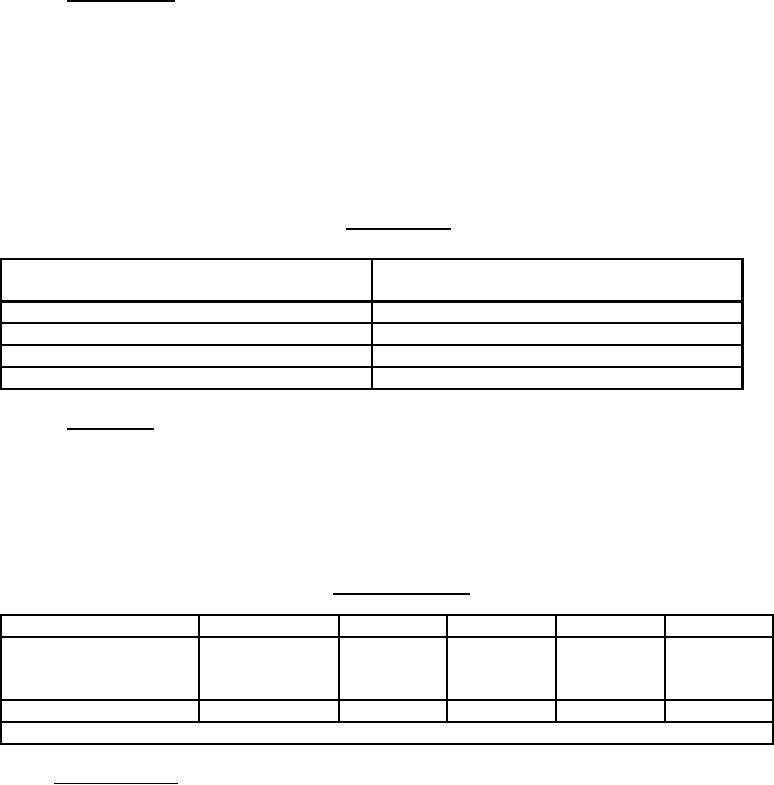
MIL-PRF-25435D
4.5.6.1 Resonance test. Resonant nodes of the transmitter shall be determined by varying the
frequency of applied vibration slowly through the specified range at vibrator accelerations shown
in Table I. Individual resonant nodes surveys shall be conducted with vibration applied along
each set of three mutually perpendicular axes of the transmitter. The transmitter shall be vibrated
at the indicated resonant conditions for the times shown in Table II and the applied double
amplitudes of vibrator accelerations in Table I. Vibration shall be applied along each of the three
mutually perpendicular axes. If more than one resonance is encountered when vibration is
applied along any one axis, each resonance shall be sustained for the time shown in the
applicable portion of the vibration test schedule. If more than four resonances are encountered
with vibration applied along one axis, the four most severe resonances shall be chosen for test.
TABLE I. Vibration data
Frequency (Hz)
Displacement in double amplitude (inch) and
Acceleration (g), if applicable
5-10
0.2
10-18
0.2 to 0.06 at 30g
18-99
0.06
99-2,000
0.06 to 0.001 at 30g
4.5.6.2 Cycling test. The transmitter shall be connected to the standard indicating unit and the
transmitter pressure adjusted to obtain a mid-scale reading on the unit. While operating, the
transmitter shall be vibrated in accordance with the vibration schedule in Table II. The frequency
shall be varied logarithmically from 5 to 2,000 Hz and returned to 5 Hz in 20-minute intervals at
an applied acceleration of ±30g. Indicating unit pointer oscillation and variation shall not exceed
the tolerances in the contract. At the end of the vibration test, the transmitter shall be subjected to
the scale and friction error test (4.5.3) and shall meet the tolerances in the contract.
TABLE II. Vibration schedule
Number of resonances
0
1
2
3
4
Total vibration time at
--
30
60
90
120
resonance (min) *(see
note)
Cycling time (hr)
3
2.5
2
1.5
1
*Note: 30 minutes at each resonance.
4.5.7 Low temperature. After performing a scale and friction error test (4.5.3), the transmitter
shall have pressure and power connections made to simulate operational conditions and shall be
connected to the standard indicating unit. The transmitter shall be placed in a temperature
chamber and the temperature brought to -65° ± 3°F for 4 hours. After 4 hours, with the
temperature still at -65° ± 3°F, the transmitter again shall be subjected to the scale and friction
error test (4.5.3).
8
For Parts Inquires call Parts Hangar, Inc (727) 493-0744
© Copyright 2015 Integrated Publishing, Inc.
A Service Disabled Veteran Owned Small Business